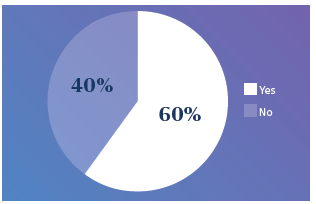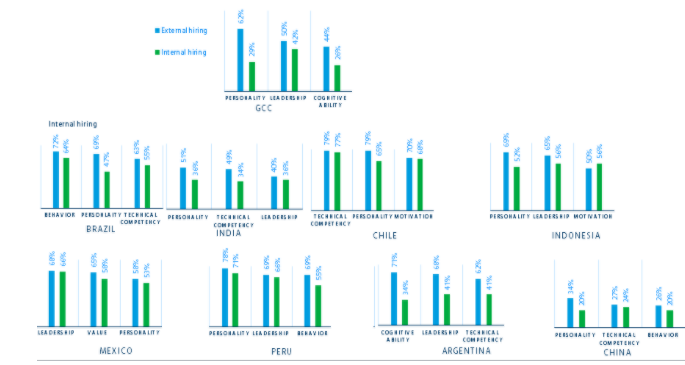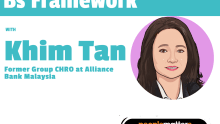Talent acquisition & development — Two sides of the same coin

Most organizations realize that hiring the best talent is not enough to achieve their organizational goals. Companies need to invest in their talent and develop their employees over time. By doing so, they can help align the business’s and employees’ aspirations for more impact.
What are companies doing today to acquire the right talent and develop their employees through planned interventions? Mercer’s Talent Assessment Practices (TAPS) report helps you understand the critical practices driving talent practices in markets across the globe.
Mercer’s Talent Assessment Practices reports span 10 countries:
- India
- China
- UAE and KSA
- Brazil
- Mexico
- Peru
- Argentina
- Chile
- Indonesia
Between 20% and 30% of the participants across countries say they are concerned about their hiring process’s efficacy. And about 30% to 40% of organizations indicate the need for predictive analytics to make better hiring decisions.
Succession planning and honing the leadership skills of current employees are other crucial concerns for business leaders globally. Few companies today believe they have a ready market for hiring talent — most of them prefer to develop their talent in-house. In fact, 80% of the companies in these countries (except Brazil) say they prefer to develop talent in-house rather than hire externally.
Buying or borrowing talent
With ever-changing technology, companies must wrestle with the question, “Is our talent ready for the advancements innovation brings?” Most companies today are confident that they can identify the skills likely to be disrupted by automation. However, with the threat of skills becoming redundant comes a company’s responsibility to upskill or redeploy its employees, or eventually move them out of the organization.
More than 60% of organizations globally (except for India, where the percentage of companies is marginally lower at 55%) say they have a formal reskilling program targeting specific employees in place. The challenge, though, remains how to quantify the skill gap for these employees.
However, reskilling programs cannot be organization-wide. Not all skills are pervasive. Most organizations say that identifying the right employees and then connecting them to the right skill requirement is critical to any upskilling program’s success.
For the majority of companies, leadership development and learning agility are focus areas for investing in talent. The work environment continues to change rapidly, and technological advancements demand that organizations keep pace. So an agile culture remains a critical organizational competency. Yet agility alone does not guarantee success; success depends on leaders investing in the platforms and infrastructure to keep pace with change — paving the way for structured interventions.
Use of talent assessment tools in 2020
60% of survey participants across 10 countries indicated that they would be using talent assessment tools in 2020 — some are continuing the practice from 2019, and others are introducing it in 2020.

Structured interventions
In terms of upskilling, many companies across the countries we surveyed highlight a lack of knowledge about their talent’s future readiness as a critical concern. Also, many question the efficacy of traditional methods of hiring talent.
Therefore, it is no surprise that assessments are becoming an increasingly common intervention. Organizations use assessments extensively to identify the best people and then motivate and retain them throughout their lifecycle with the organization.
A majority of the companies we surveyed (50%–80% across countries) say they use assessment tools for a broad range of activities — from performance management and succession planning to hiring and high-potential identification. Companies use these tools to assess technical and behavioral competence — including leadership and learning ability — and soft skills, such as values and culture fit.

Areas of focus for external hiring and internal movement
Across countries, technical competency and personality are key focus areas when hiring externally. By contrast, companies clearly prefer to build leadership capabilities internally.
Assessments should be part of an organization’s infrastructure — the pandemic has brought this to the forefront. The new normal dictates that we can no longer rely on traditional hiring methods, such as in-person interviews. Companies have had to make the hard decision to rely extensively on technology — to support the hiring process and to appreciate the need to hire employees who can be upskilled for the future.
Planning for an uncertain future
The current global crisis has made companies question how they function, their agility and their ability to deal with an unprecedented situation. The question arising for companies is, do they have the resources available to ensure they are hiring appropriately and keeping their employees motivated?
Business and HR leaders globally have had to reassess whether they are ready for the new world the pandemic has created. Focused interventions such as assessments are not new — but an intervention that can continue to provide solutions in an uncertain future is the new expectation.
The need for future-ready employees requires future-ready organizations to support that growth. Assessments are critical interventions that are part of a company’s transformation journey. They allow companies to hone their employees’ skills to prepare them for changes that are coming — either by reskilling them, finding them alternative roles internally or eventually exiting them.
Today, many different stakeholders — from corporate employees working remotely to students studying or completing their examinations from home — face new challenges. To address these challenges, they need future-ready solutions.
Assessments and their future
Our survey reveals crucial challenges emerging across countries that companies need to address. Assessments seem to provide a best-fit solution for now.
The biggest hiring challenge for most companies is the efficiency of their current hiring process. Assessments are progressively becoming an antidote to traditional hiring methods. Assessments can help prune the list of suitable candidates who meet the requirements of the role. In addition, assessments allow for a virtual process, reducing logistical hassles.
In today’s new world, assessments provide significant support to organizations by ensuring they can continue to operate in a business-as-usual mode.
Companies need targeted reskilling programs to develop employees, but quantifying employees’ skill gaps remains a challenge. Assessments today allow companies to quantify the skill gaps within their organizations at different employee levels, identify the future skills they need, and build targeted plans focused on individual and organizational development.














